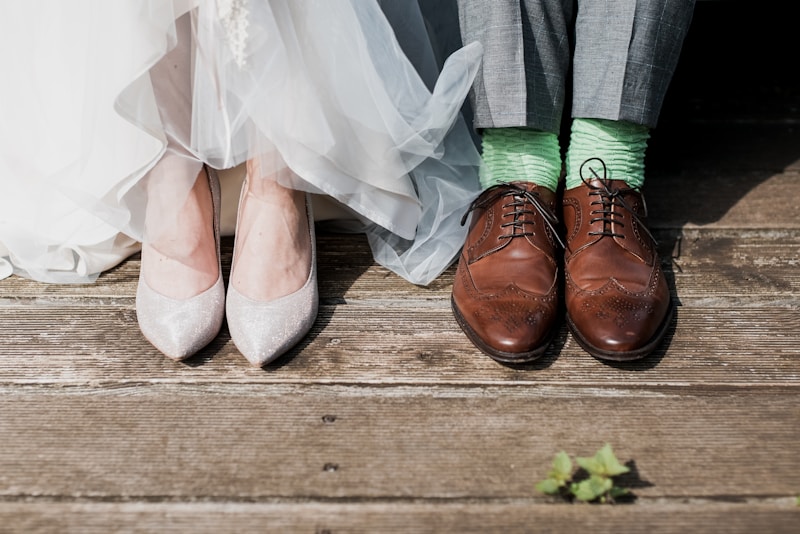Ultimate Guide to Beaded Wedding Dress Adjustments: Perfecting Your Bridal Look
Understanding Beaded Wedding Dress Adjustments
A wedding is a monumental event, and every bride deserves to look her absolute best. When it comes to beaded wedding dresses, even the slightest adjustment can make a significant difference in the overall appearance and comfort of the gown. In this article, we will explore everything you need to know about beaded wedding dress adjustments, including common adjustments, tips for finding the right tailor, and essential considerations to ensure your wedding dress fits flawlessly on your big day.
Common Beaded Wedding Dress Adjustments
Before diving into the specifics, it's crucial to understand the common areas where beaded wedding dresses might need adjustments. Factors such as size, fabric, and the placement of beads can affect how your dress fits. Below are the typical adjustments you might need:
| Adjustment Type | Description | Importance |
| Taking in the sides | Reducing the width of the dress to ensure a snug fit. | Essential for comfort and flattering silhouette. |
| Hem adjustment | Alterations made to the dress's length to achieve the desired style. | Critical for showcasing your shoes and preventing tripping. |
| Strap adjustments | Modifications to the straps to ensure they stay securely in place. | Important for stability and comfort. |
| Taking out seams | Making the dress larger if weight is lost or dress needs to fit another size. | Necessary for comfort, especially if you fluctuate in weight. |
| Beading repair or repositioning | Fixing or adjusting bead placement for symmetry or comfort. | Creates a polished and cohesive look. |
The Importance of Timing for Wedding Dress Adjustments
When it comes to adjustments, timing is everything. It is advisable to schedule your fitting appointments well in advance, ideally three to six months before your wedding date. This timeframe allows for multiple fittings and ensures that any unforeseen issues can be addressed without causing stress as the big day approaches. Consider the following timeline for adjustments:
- Initial Fitting: This should be scheduled when your dress arrives, usually about three months before the wedding.
- Second Fitting: A month later, ideally to check on the progress and any new adjustments that may be needed.
- Final Fitting: Scheduled a week or two before the wedding to make sure everything is perfect.
Choosing the Right Tailor for Your Beaded Wedding Dress
Finding a professional tailor who is experienced in working with delicate materials and embellishments is key. Beaded dresses often have intricate designs that require special care during adjustments. Here are some tips for selecting the right tailor:
- Ask for Recommendations: Inquire with friends, family, or bridal shops for trusted recommendations.
- Check Credentials: Look for tailors who specialize in wedding dresses and have experience with beading.
- Examine Previous Work: Request to see before-and-after photos of previous bridal alterations they've completed.
- Communication: A good tailor should be able to clearly communicate what is possible and suggest ideas for achieving the best fit.
Factors to Consider During Adjustments
As you prepare for your adjustments, consider the following factors to ensure success:
1. Fabric Integrity
When making adjustments to a beaded dress, it's critical to preserve the integrity of the fabric to avoid damage to the intricate beadwork. Work closely with your tailor to ensure they understand the delicate nature of your gown.
2. Beading Patterns
Beading may need to be repositioned or removed for alterations. Make sure to discuss with your tailor which beads will be impacted and how they can be repaired after adjustments.
3. Comfort vs. Style
Your dress should not only look fantastic but also feel comfortable. Discuss any mobility concerns with your tailor to allow for ease of movement; after all, you will be walking, dancing, and celebrating on your wedding day.
Final Touches: Accessorizing Your Beaded Wedding Dress
After you've made all necessary adjustments, it’s important to consider how your accessories will complement your dress. Here are a few tips:
- Selecting the Right Veil: Choose a veil that complements the beadwork without overshadowing the gown. A simple veil can often be the best choice.
- Shoes: Consider both style and comfort. Your shoe choice may also factor into hem adjustments.
- Jewelry: Opt for pieces that enhance the dress without creating a cluttered appearance. Less is often more with a heavily beaded dress.
Conclusion: Achieving Perfection in Your Beaded Wedding Dress Adjustments
In summary, beaded wedding dress adjustments play a pivotal role in ensuring your dress fits perfectly. From timing your adjustments properly to selecting the right tailor, every detail counts in achieving the desired look. As you prepare for such an important day, remember to communicate openly with your tailor and consider the overall comfort and style of your dress.
Even with meticulous planning and adjustments, it's essential to allow yourself some grace on your wedding day. Enjoy the process, and remember that you will shine regardless of any minor imperfections. Best of luck, and may your wedding be as beautiful as the beaded dress you wear!
